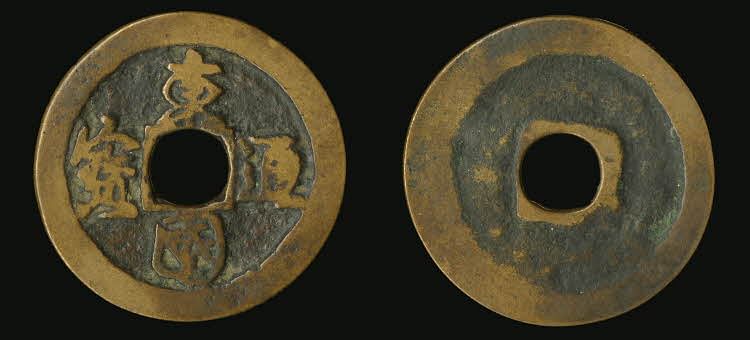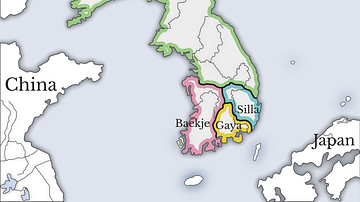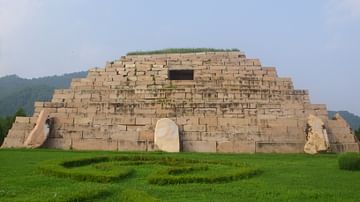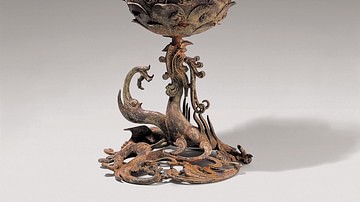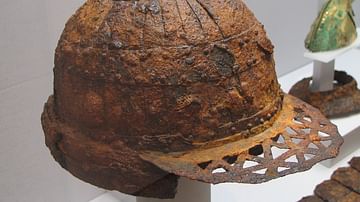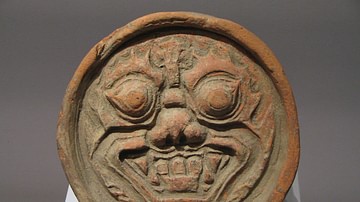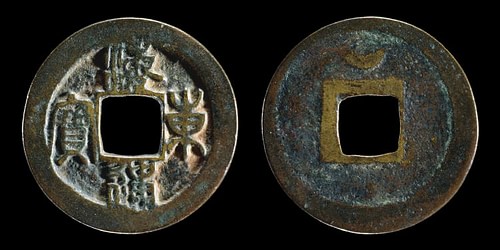
The coinage of ancient Korea (pre-13th century CE) first employed Chinese coins, known locally as the oshuchon. Korean rulers began minting their own metal coins from the late 10th century CE, first in copper and iron, and later in bronze. These coins never really gained wide circulation, though, and it would not be until the 17th century CE that coinage fully replaced the barter system prevalent throughout the peninsula. Another form of currency, in use from the 12th to 14th century CE, was the unbyong silver vase, stamped by the state and given an official rate of exchange with staple commodities such as rice; it was shaped like the peninsula of Korea.
Early Currencies
In early Korea, the system of exchange was principally one of barter where goods were calculated as having a certain value in relation to fundamental commodities such as grain, rice, and cloth. The latter was first hemp and then more typically cotton cloth, known as cloth currency or pohwa. The first known currency used in ancient Korea which was made of metal was knife money (ming-tao-chien), so called because of the crescent, bladelike shape. This came with settlers from China during the Warring States Period (475-221 BCE) and has been excavated at sites in the Pyeongan and Jeolla provinces. The Chinese also introduced coins to Korea when the Han Dynasty invaded the north at the end of the 2nd century BCE. These coins became the official currency and were known as wuzhu in Chinese or oshuchon in Korean, meaning 'five-grain'. The oshuchon continued to be used by the two kingdoms of Goguryeo and Silla up to the 10th century CE. They are commonly found in the tombs of the Nangnang (Lelang) region.
The First Korean Mints
It was during the Goryeo Dynasty (918 – 1392 CE) that Korea first produced its own coins. These early coins, minted from 996 CE, imitated those of the earlier Chinese Tang Dynasty (618 – 907 CE) and were made of iron and copper. Even the 'heavy coin of the Qianyuan period' inscription was translated from the Chinese (Qianyuan zhongbao) to the Korean Konwon chungbo. They did add an identifying 'Eastern kingdom' (Tongkuk) on the reverse side of the coin. As with Chinese coins, the Korea coins had a square central hole.
In 1097 CE and 1102 CE copper coins were minted by the Goryeo king, Sukjong. These carried uniquely Korean inscriptions but still continued with the distinctive Chinese square hole design. Marked on one side with the familiar tongbo ('circulating treasure') or chungbo ('heavy treasure'), the other side carried one of the following possible legends identifying them as of Goryeo Korea:
- Tongguk tongbo – 'Coin of the Eastern Kingdom'
- Tongguk chungbo – 'Heavy coin of the Eastern Kingdom'
- Haedong tongbo – 'Coin of the Land East of the Sea'
- Haedong chungbo – 'Heavy coin of the Land East of the Sea'
- Samhan tongbo – 'Coin of the Three Hans'
- Samhan chungbo – 'Heavy coin of the Three Hans'
These legends were written in four types of script – the clerical, regular, seal, and cursive. Once again, tombs (e.g. at Gaeseong) have been the best source of ancient coins for archaeologists and historians to study.
Silver Vases
An alternative to coins as a form of payment was the unbyong (aka hwalgu) silver vases which were made from 1101 CE. The vases took the shape of the Goryeo empire and were marked as legitimate currency by having the official state seal engraved on them. Naturally, the vases contained a great deal of silver (600 g or one kun) and so were only useful for large payments. Historians also suggest that they were used primarily by aristocrats and for bribing officials. Unfortunately, no examples survive, but we do know from a 1282 CE law that the value of one unbyong was fixed at between 2,700 and 3,400 litres of rice. Despite their impracticality for smaller transactions, the vases continued to be used over the next two centuries, until King Chungnyeol permitted rough or broken pieces of silver to be used instead at the end of the 13th century CE. By 1331 CE the small vases shaped liked Korea itself were no longer in use.
Chinese & Paper Money
No further coins were minted in Korea until the 15th century CE, and as in earlier periods, Chinese coins were imported and used instead. The Sinan shipwreck, which was discovered in waters off the coast of South Korea in 1976 CE, dates to the Song Dynasty (10th - 13th century CE) and contained 26,775 kg of Chinese coins destined for use in ancient Korea.
The Korean state did produce paper money in the 14th century CE, but it was never issued. Another attempt was made in the 15th century CE when notes were made from the high-quality hanji paper for which Korea was famous throughout Asia. Traders also accepted Chinese banknotes during the Middle Kingdom period. However, banknotes were generally only used to pay taxes, and they struggled to catch on in Korea, where metal coins were used, and trusted, far more widely. No paper money survives from this period.
This content was made possible with generous support from the British Korean Society.
